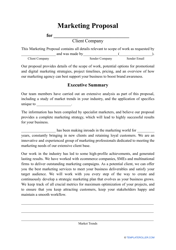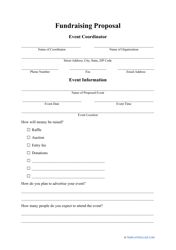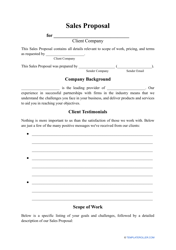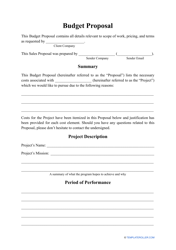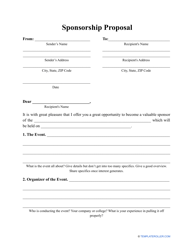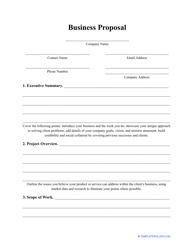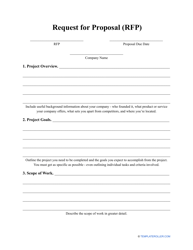What Is a Request for Proposal (RFP): Free Request for Proposal Template

A proposal in business is a formal document written up by a company and sent to a potential partner or client. The main purpose of the document is to secure a business or sales contract. Similar to a business plan, the aim of the proposal is to market your business, your services, and your products in order to stand out against competitors.
There are two main types of business proposals:
- Unsolicited. Unsolicited business proposals are similar to cold calls: you send them to potential clients that - according to your research - may be interested in the goods or services you provide.
- Solicited. Solicited proposals are sent as a response to a request for proposal (or RFP). The RFP process starts with an already-interested client reaching out with a description of the problem they’re looking to solve. The proposal you provide in response should cater to the specifics of this project.
How to Write a Request for Proposal?
The request for proposal process starts with writing the RFP and sending it to your potential business partner.
Coming up with a well-written RFP that helps you get the information you’re looking for will increase the chances of you getting the services you need at the best possible price. Structuring your RFP in a compelling and streamlined way will make sure that vendors understand what information to supply and will reduce wait time for your business.
So how do you write a professional and persuasive request for proposal:
- Start with a well-thought-out pitch. Your introduction should compel potential partners to choose to do work with you.
- Define the needs and requirements of your business. Listing your specific goals and timeframe will help weed out vendors and suppliers that are not up to the task.
- Provide clear criteria for vendor selection. This will show that you’re serious about your project and not just soliciting quotes from businesses.
- Give information on the supplementary documentation (price lists, plans, etc.) you expect to receive and specify your contact information so that the vendors know where to submit their proposals.
Make sure to check and proofread your RFP. Using a company-branded template with your own specific colors and fonts is also strongly recommended.
Request for Proposal (RFP) Template
Having a professional-looking RFP template will make sure that you always end up with a polished request for proposal. This, in turn, will help vendors understand your requirements and make the RFP process as cohesive and effective as possible.
Even though there is no one-size-fits-all RFP format, all requests should include the same general categories that you can later build and expand upon:
- A short introduction.
- A one-page background of your business and the project at hand.
- The timeline of your project, the budget on hand, and the desired timeline of deliverables.
- The submission schedule, selection rules, and response time.
- Anticipated roadblocks.
- Contact information.
You will want to strike a balance between too much and too little information. Including overly-broad information may attract under-qualified or ill-suited suppliers. On the other hand, an overly-detailed and long RFP may signal to vendors that you are a difficult client and might discourage them from even submitting a proposal.
How to Respond to a Request for Proposal?
When answering a request for proposal, the main goal is to showcase the unique qualities of your business in a way that makes a potential client want to choose you to solve their particular problem. When responding to an RFP, you are expected to provide the proposal itself along with a cover letter (a proposal letter) introducing your business and summarizing the key elements of the main document.
Both the letter and the proposal should use precise language and demonstrate proficiency in your industry and experience in handling the type of problem the client is facing. You should strive to demonstrate your understanding of the client’s needs while managing to highlight the way you are uniquely qualified to meet them.
So, what is the key to writing an effective proposal in response to an RFP?
- Research the client thoroughly before diving in. Learn as much as you can about your client’s business in order to expertly tailor your proposal to their needs.
- Make sure that you fully understand the requirements of the project. Reference or quote the specific goals from the RFP you received and provide concrete solutions throughout the text.
- Focus on helping your client reach their goals. Focusing too much on your own success or the previous projects you’ve completed might get an unfavorable response.
- Utilize charts, tables, and other visuals. Steering away from overly-descriptive pages of text will help your proposal capture the reader’s attention and stand out against any competitors.
- Proofread your document. Consider using a template to help you stick to a previously-determined concise format and edit your work to avoid any unwanted revisions down the line.
Related Topics:
